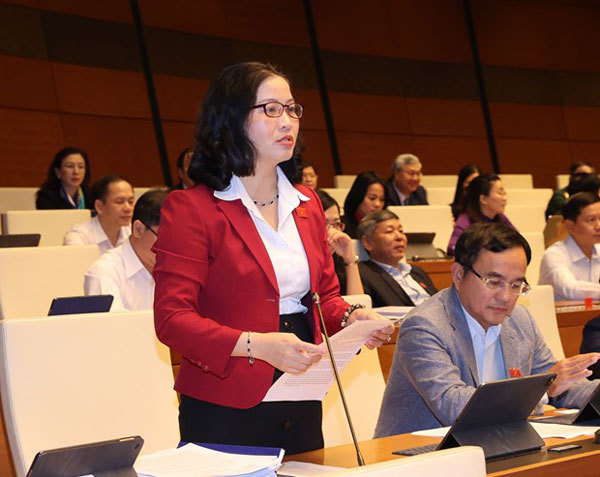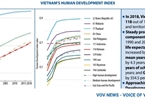 |
| President of Vietnam National University of Agriculture Nguyen Thi Lan, a NA deputy from Hanoi delegation gives opinions at a NA discussion in November 2020. Photo Doan Tan |
The percentage is expected to increase to 70 per cent by 2030.
These are parts of goals in a programme to increase women’s participation in leadership and decision-making process in Vietnam in the next 10 years which Prime Minister Nguyen Xuan Phuc has approved.
At present, according to a Government report, women are part of the leadership at 44.53 per cent of central agencies, 45.52 per cent of provincial agencies, 53.74 per cent at district agencies and 35.64 per cent at commune agencies.
The programme hopes to bring into full play the potential and creativity of women, helping Vietnam realise its commitments to achieve sustainable development of gender equality and women's empowerment.
Under the programme, by 2025, at least 40 per cent of candidates for managerial/leading positions in State’s agencies at all levels are hoped to be women. The rate is expected to increase by 50 per cent in 2030.
By 2025, 75 per cent of the female candidates for leading positions will be offered training courses and by 2030, the percentage is expected to increase by 90 per cent.
In sectors where women make up less than 30 per cent of staff, such rates will be adjusted. In localities home to ethnic minority groups, the proportion of female leaders from the ethnic groups must be suitable to population structure.
The programme also points out measures to achieve such goals including an improved legal framework and law enforcement for women, strengthened communication on gender equality as well as on the roles/positions and potential of women in the new era.
Vietnam would also boost international co-operation on women’s participation in leadership and management through training courses or experience sharing.
The country plans to develop a database on female staff and leaders as part of its database on State employees.
In Vietnamese politics, women hold three Politburo positions, accounting for 15.78 per cent.
Several members of the Party Central Committee are women, while the NA Chair, NA Vice Chair and Vice President are all women. The percentage of female National Assembly deputies in 2017 was 26.7 per cent, one of the highest percentages of female parliamentarians in the region.
In the first National Assembly of Vietnam in 1946, female deputies made up only 3 per cent. The percentage has been increasing for years and in the country’s 13th National Assembly (2011-2016), it reached 26.72 per cent with 133 female deputies out of total 496 deputies. The figures make Vietnam rank second in ASEAN and 43rd out of 143 countries across the world in terms of female leadership.
During 2016-2021, more women were elected to People's Councils at all levels as they made up 26.59 per cent at commune People’s Councils, 27.5 per cent at district-level People’s Councils and 26.56 per cent at provincial People’s Councils.
Women hold key leadership at 32.14 per cent of provincial People's Committees nationwide, 32.64 per cent of district People's Committees and nearly 22 per cent of commune People's Committees.
Women constitute 47.7 per cent of the labour force in the country and 26.5 per cent of business owners and CEOs. VNS

Setting the scene for Vietnam’s future human development
With Vietnam celebrating the 44th anniversary of joining the UN this month, Caitlin Wiesen, UNDP resident representative in Vietnam, pores over the country's progress in human development and the challenges ahead to tackle various inequalities.

Women play important role in family and community despite COVID-19’s challenges
Although women face a number of challenges during the COVID-19 pandemic, their roles in the family and community has never faded, an international conference in Hanoi heard.